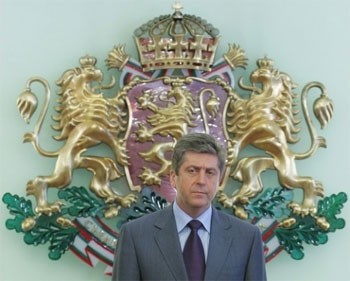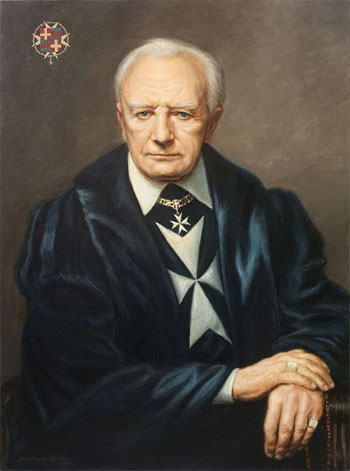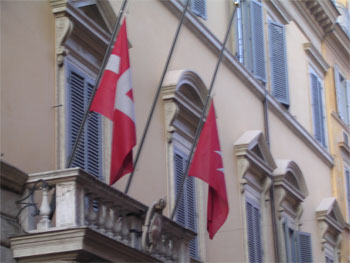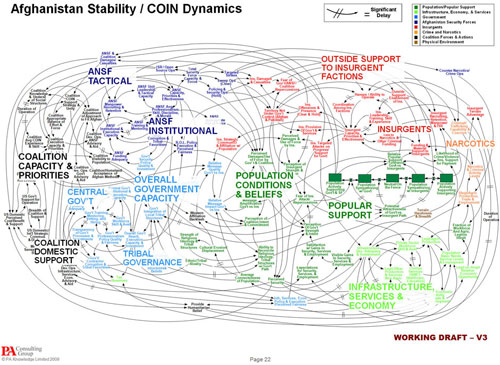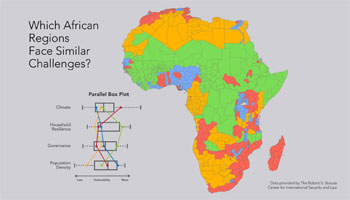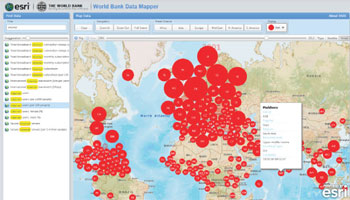Slavsby Wikipedia
February 26, 2017
If the conditions in America continue to develop along the same lines as in the last generation, if the immigration statistics and the proportion of births among all the nationalities remain the same, our imagination may picture the United States of fifty or a hundred years hence as a land inhabited only by Slavs, Negroes and Jews ...
-- The International Jew, by Henry Ford
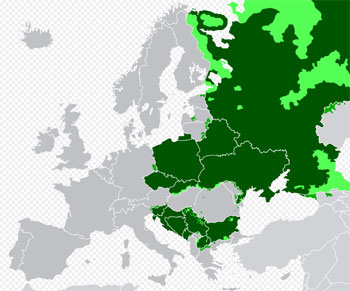 Distribution of Slavic-speaking populations in Europe.
Distribution of Slavic-speaking populations in Europe.
Official Slavic language used by the majority
Significant unofficial / co-official / historical Slavic language usage
Significant non-Slavic language usage or bilingualSlavs are the largest Indo-European ethno-linguistic group in Europe. They are native to Central Europe, Eastern Europe, Southeastern Europe, Northeastern Europe, North Asia and Central Asia. Slavs speak Slavic languages of the Balto-Slavic language group. From the early 6th century they spread to inhabit most of Central, Eastern and Southeastern Europe.[1]
States with Slavic languages comprise over 50% of the territory of Europe.[2] Present-day Slavic people are classified into West Slavs (chiefly Poles, Czechs and Slovaks), East Slavs (chiefly Russians, Belarusians, and Ukrainians), and South Slavs (chiefly Serbs, Croats, Bosniaks, Macedonians, Slovenes, and Montenegrins of the Former Yugoslavia as well as Bulgarians).[3] For a more comprehensive list, see the ethnocultural subdivisions. Modern Slavic nations and ethnic groups are considerably diverse both genetically and culturally, and relations between them – even within the individual ethnic groups themselves – are varied, ranging from a sense of connection to mutual feelings of hostility.[4]
PopulationThere are an estimated 360 million Slavs worldwide.
Nation / Nation-state / NumbersRussians RUS 130,000,000[5][6]
Poles POL 57,393,000[7]
Ukrainians UKR 46,700,000–51,800,000[8]
Serbs SRB 12,100,000[9]–12,500,000[10]
Czechs CZE 12,000,000[11]
Bulgarians BUL 10,000,000[12][13]
Belarusians BLR 10,000,000[14]
Croats CRO 8,000,000[15][16][17]
Slovaks SVK 6,940,000[18]
Bosniaks BIH 2,800,000
Slovenes SVN 2,500,000[19]
Macedonians MKD 2,200,000[20]
Montenegrins MNE 500,000
EthnonymThe Slavic autonym is reconstructed in Proto-Slavic as *Slověninъ, plural *Slověne. The oldest documents written in Old Church Slavonic and dating from the 9th century attest the autonym as Slověne (Словѣне). The oldest mention of the Slavic ethnonym is the 6th century AD Procopius, writing in Byzantine Greek – Sklaboi (Σκλάβοι), Sklabēnoi (Σκλαβηνοί), Sklauenoi (Σκλαυηνοί), Sthlabenoi (Σθλαβηνοί), or Sklabinoi (Σκλαβῖνοι),[21] while his contemporary Jordanes refers to the Sclaveni in Latin.[22]
The reconstructed autonym *Slověninъ is usually considered a derivation from slovo ("word"), originally denoting "people who speak (the same language)," i.e. people who understand each other, in contrast to the Slavic word denoting German people – němci, meaning "silent, mute people" (from Slavic *němъ – "mute, mumbling"). The word slovo ("word") and the related slava ("glory, fame") and slukh ("hearing") originate from the Proto-Indo-European root *ḱlew- ("be spoken of, glory"), cognate with Ancient Greek κλῆς (klês – "famous"), whence comes the name Pericles, Latin clueo ("be called"), and English loud.
Some other theories have limited support.
The English term "slave" eventually derives from the ethnonym Slav. In medieval wars many Slavs were captured and enslaved, which led to the word "slav" becoming synonym to "enslaved person".[23][24]
Early history
First mentionsThe Slavs under name of the Antes and the Sclaveni make their first appearance in Byzantine records in the early 6th century. Byzantine historiographers under Justinian I (527–565), such as Procopius of Caesarea, Jordanes and Theophylact Simocatta describe tribes of these names emerging from the area of the Carpathian Mountains, the lower Danube and the Black Sea, invading the Danubian provinces of the Eastern Empire.
Procopius wrote in 545 that "the Sclaveni and the Antae actually had a single name in the remote past; for they were both called Sporoi in olden times." He described them as barbarians, who lived under democracy, and that they believe in one god, "the maker of lightning" (Perun), to whom they made sacrifice. They lived in scattered housing, and constantly changed settlement. Regarding warfare, they were mainly foot soldiers with small shields and battleaxes, lightly clothed, some entering battle naked with only their genitals covered. Their language is "barbarous" (that is, not Greek-speaking), and the two tribes do not differ in appearance, being tall and robust, "while their bodies and hair are neither very fair or blond, nor indeed do they incline entirely to the dark type, but they are all slightly ruddy in color. And they live a hard life, giving no heed to bodily comforts..."[25] Jordanes described the Sclaveni having swamps and forests for their cities.[26] Another 6th-century source refers to them living among nearly impenetrable forests, rivers, lakes, and marshes.[27]
Menander Protector mentions a Daurentius (577–579) that slew an Avar envoy of Khagan Bayan I. The Avars asked the Slavs to accept the suzerainty of the Avars; he however declined and is reported as saying: "Others do not conquer our land, we conquer theirs – so it shall always be for us".[28]
The relationship between the Slavs and a tribe called the Veneti east of the River Vistula in the Roman period is uncertain. The name may refer both to Balts and Slavs.
MigrationsAccording to eastern homeland theory, prior to becoming known to the Roman world, Slavic-speaking tribes were part of the many multi-ethnic confederacies of Eurasia – such as the Sarmatian, Hun and Gothic empires. The Slavs emerged from obscurity when the westward movement of Germans in the 5th and 6th centuries CE (thought to be in conjunction with the movement of peoples from Siberia and Eastern Europe: Huns, and later Avars and Bulgars) started the great migration of the Slavs, who settled the lands abandoned by Germanic tribes fleeing the Huns and their allies: westward into the country between the Oder and the Elbe-Saale line; southward into Bohemia, Moravia, much of present-day Austria, the Pannonian plain and the Balkans; and northward along the upper Dnieper river. Perhaps some Slavs migrated with the movement of the Vandals to Iberia and north Africa.[29]
Around the 6th century, Slavs appeared on Byzantine borders in great numbers.[30][page needed] The Byzantine records note that grass would not regrow in places where the Slavs had marched through, so great were their numbers. After a military movement even the Peloponnese and Asia Minor were reported to have Slavic settlements.[31] This southern movement has traditionally been seen as an invasive expansion.[32] By the end of the 6th century, Slavs had settled the Eastern Alps regions.
Middle Ages
Early Slavic statesWhen their migratory movements ended, there appeared among the Slavs the first rudiments of state organizations, each headed by a prince with a treasury and a defense force. Moreover, it was the beginning of class differentiation, and nobles pledged allegiance either to the Frankish/ Holy Roman Emperors or the Byzantine Emperors.
In the 7th century, the Frankish merchant Samo, who supported the Slavs fighting their Avar rulers, became the ruler of the first known Slav state in Central Europe, which, however, most probably did not outlive its founder and ruler. This provided the foundation for subsequent Slavic states to arise on the former territory of this realm with Carantania being the oldest of them. Very old also are the Principality of Nitra and the Moravian principality (see under Great Moravia). In this period, there existed central Slavic groups and states such as the Balaton Principality, but the subsequent expansion of the Magyars, as well as the Germanisation of Austria, separated the northern and southern Slavs. The First Bulgarian Empire was founded in 681, and the Slavic language Old Church Slavonic became the main and official of the empire in 864. Bulgaria was instrumental in the spread of Slavic literacy and Christianity to the rest of the Slavic world.
Modern historyAs of 1878, there were only three free Slavic states in the world: the Russian Empire, Serbia and Montenegro. Bulgaria was also free but was de jure vassal to the Ottoman Empire until official independence was declared in 1908. In the entire Austro-Hungarian Empire of approximately 50 million people, about 23 million were Slavs. The Slavic peoples who were, for the most part, denied a voice in the affairs of the Austria-Hungary, were calling for national self-determination. Because of the vastness and diversity of the territory occupied by Slavic people, there were several centers of Slavic consolidation. In the 19th century, Pan-Slavism developed as a movement among intellectuals, scholars, and poets, but it rarely influenced practical politics and did not find support in some Slavic nations. Pan-Slavism became compromised when the Russian Empire started to use it as an ideology justifying its territorial conquests in Central Europe as well as subjugation of other Slavic ethnic groups such as Poles and Ukrainians, and the ideology became associated with Russian imperialism.
During World War I, representatives of the Czechs, Slovaks, Poles, Serbs, Croats, and Slovenes set up organizations in the Allied countries to gain sympathy and recognition.[33] In 1918, after World War I ended, the Slavs established such independent states as Czechoslovakia, the Second Polish Republic, and the State of Slovenes, Croats and Serbs (which merged into Yugoslavia).
During World War II, Nazi Germany planned to kill, deport, or enslave the Slavic and Jewish population of occupied Eastern Europe to create Living space for German settlers,[34] and also planned the starvation of 80 million people in the Soviet Union.[35] The partial fulfilment of these plans resulted in the deaths of an estimated 19.3 million civilians and prisoners of war.[36]
The first half of the 20th century in Russia and the Soviet Union was marked by a succession of wars, famines and other disasters, each accompanied by large-scale population losses.[37] Stephen J. Lee estimates that, by the end of World War II in 1945, the Russian population was about 90 million fewer than it could have been otherwise.[38]
The common Slavic experience of communism combined with the repeated usage of the ideology by Soviet propaganda after World War II within the Eastern bloc (Warsaw Pact) was a forced high-level political and economic hegemony of the USSR dominated by Russians. A notable political union of the 20th century that covered most South Slavs was Yugoslavia, but it ultimately broke apart in the 1990s along with the Soviet Union.
The word "Slavs" was used in the national anthem of the Slovak Republic (1939–1945), Yugoslavia (1943–1992) and the Federal Republic of Yugoslavia (1992–2003), later Serbia and Montenegro (2003–2006).
Former Soviet states, as well as countries that used to be satellite states or territories of the Warsaw Pact, have numerous minority Slavic populations, many of whom are originally from the Russian SFSR, Ukrainian SSR and Byelorussian SSR. As of now, Kazakhstan has the largest Slavic minority population with most being Russians (Ukrainians, Belarusians and Poles are present as well but in much smaller numbers).
Pan-SlavismPan-Slavism, a movement which came into prominence in the mid-19th century, emphasized the common heritage and unity of all the Slavic peoples. The main focus was in the Balkans where the South Slavs had been ruled for centuries by other empires: the Byzantine Empire, Austria-Hungary, the Ottoman Empire, and Venice. The Russian Empire used Pan-Slavism as a political tool; as did the Soviet Union, which gained political-military influence and control over most Slavic-majority nations between 1945 and 1948 and retained a hegemonic role until the period 1989–1991.
LanguagesProto-Slavic, the supposed ancestor language of all Slavic languages, is a descendant of common Proto-Indo-European, via a Balto-Slavic stage in which it developed numerous lexical and morphophonological isoglosses with the Baltic languages. In the framework of the Kurgan hypothesis, "the Indo-Europeans who remained after the migrations [from the steppe] became speakers of Balto-Slavic".[39] Proto-Slavic is defined as the last stage of the language preceding the geographical split of the historical Slavic languages. That language was uniform, and on the basis of borrowings from foreign languages and Slavic borrowings into other languages, cannot be said to have any recognizable dialects – this suggests that there was, at one time, a relatively small Proto-Slavic homeland.[40]
Slavic linguistic unity was to some extent visible as late as Old Church Slavonic manuscripts which, though based on local Slavic speech of Thessaloniki, could still serve the purpose of the first common Slavic literary language.[41] Slavic studies began as an almost exclusively linguistic and philological enterprise. As early as 1833, Slavic languages were recognized as Indo-European.[42] Sometimes the West Slavic and East Slavic languages are combined into a single group known as North Slavic languages.
Standardised Slavic languages that have official status in at least one country are: Belarusian, Bosnian, Bulgarian, Croatian, Czech, Macedonian, Montenegrin, Polish, Russian, Serbian, Slovak, Slovene, and Ukrainian.
The alphabets used for Slavic languages is frequently connected to the dominant religion among the respective ethnic groups. The Orthodox use the Cyrillic alphabet and the Roman Catholics use Latin alphabet; the Bosniaks who are Muslims also use the Latin. Few Greek Roman and Roman Catholics use the Cyrillic alphabet however. Serbian language and Montenegrin language use both Cyrillic and Latin alphabets. There is also a Latin script to write in Belarusian, called the Lacinka alphabet.
ReligionThe pagan Slavic populations were Christianized between the 7th and 12th centuries. Orthodox Christianity is predominant in the East and South Slavs, while Roman Catholicism is predominant in West Slavs and the western South Slavs. The religious borders are largely comparable to the East–West Schism which began in the 11th century.
The majority of contemporary Slavic populations who profess a religion are Orthodox, followed by Catholic, while a small minority are Protestant. There are minor Slavic Muslim groups. Religious delineations by nationality can be very sharp; usually in the Slavic ethnic groups the vast majority of religious people share the same religion. Some Slavs are atheist or agnostic: in the Czech Republic 20% were atheists according to a 2012 poll.
The main Slavic ethnic groups by religion:
Mainly Eastern Orthodoxy:Russians
Ukrainians (incl. Rusyns)
Serbs
Bulgarians
Belarusians
Macedonians
Montenegrins
Mainly Roman Catholicism:Poles (incl. Silesians, Kashubians)
Czechs (incl. Moravians)
Croats
Slovaks
Slovenes
Sorbs
Mainly Islam:
Bosniaks
Pomaks
Gorani
Torbeshi
Ethnic groups
Ethnocultural subdivisionsSlavs are customarily divided along geographical lines into three major subgroups: West Slavs, East Slavs, and South Slavs, each with a different and a diverse background based on unique history, religion and culture of particular Slavic groups within them. Apart from prehistorical archaeological cultures, the subgroups have had notable cultural contact with non-Slavic Bronze- and Iron Age civilisations.
• The West Slavs have origin in early Slavic tribes which settled in Central Europe after East Germanic tribes had left this area during the migration period.[43] They are noted as having mixed with Germanics and Balts.[44] The West Slavs came under the influence of the Western Roman Empire (Latin) and of the Roman Catholic Church.
• The East Slavs have origins in early Slavic tribes who mixed with Finno-Ugric peoples and Balts.[45][46] Their early Slavic component, Antes, mixed or absorbed Iranians, and later received influence from the Khazars and Vikings.[47] The East Slavs trace their national origins to the tribal unions of Kievan Rus', beginning in the 10th century. They came particularly under the influence of the Eastern Roman Empire (Byzantine Empire) and of the Eastern Orthodox Church; Eastern Catholic Churches later became established in the 16th century in areas such as Ukraine.
• The South Slavs from most of the region have origins in early Slavic tribes who mixed with the local Proto-Balkanic tribes (Illyrian, Dacian, Thracian, Pannonian, Paeonian and Hellenic tribes), Celtic tribes (most notably the Scordisci), as well as with Romans (and the Romanized remnants of the former groups), and also with remnants of temporarily settled invading East Germanic, Asiatic or Caucasian tribes such as Gepids, Huns, Avars and Bulgars.[citation needed] The original inhabitants of present-day Slovenia and continental Croatia have origins in early Slavic tribes who mixed with Romans and romanized Celtic and Illyrian people as well as with Avars and Germanic peoples (Lombards and East Goths). The South Slavs (except the Slovenes and Croats) came under the cultural sphere of the Eastern Roman Empire (Byzantine Empire), of the Ottoman Empire and of the Eastern Orthodox Church and Islam, while the Slovenes and the Croats were influenced by Western Roman Empire (Latin), Holy Roman Empire and, thus by the Roman Catholic Church.
List of major ethnic groups
Ethnic group / Language familyRussians / East Slavs
Poles / West Slavs
Ukrainians / East Slavs
Serbs / South Slavs
Czechs / West Slavs
Bulgarians / South Slavs
Belarusians / East Slavs
Croats / South Slavs
Slovaks / West Slavs
Bosniaks / South Slavs
Slovenes / South Slavs
Macedonians / South Slavs
Montenegrins / South Slavs
Silesians1 / West Slavs
Moravians1 / West Slavs
Kashubians1 / West Slavs
Notes1 The ethnic classification is disputed. See main article for further information.
Relations with non-Slavic people
AssimilationThroughout their history, Slavs came into contact with non-Slavic groups. In the postulated homeland region (present-day Ukraine), they had contacts with the Iranic Sarmatians and the Germanic Goths. After their subsequent spread, the Slavs began assimilating non-Slavic peoples. For example, in the Balkans, there were Paleo-Balkan peoples, such as Romanized and Hellenized (Jireček Line) Illyrians, Thracians and Dacians, as well as Greeks and Celtic Scordisci. Over time, due to the larger number of Slavs, most descendants of the indigenous populations of the Balkans were Slavicized. The Thracians and Illyrians vanished as defined ethnic groups from the population during this period – although the modern Albanian nation claims descent from the Illyrians. Exceptions are Greece, where because Slavs were fewer than Greeks, they came to be Hellenized (aided in time by more Greeks returning to Greece in the 9th century and the role of the church and administration);[48] and Romania, where Slavic people settled en route for present-day Greece, Republic of Macedonia, Bulgaria and East Thrace, where the Slavic population gradually assimilated. Bulgars were also assimilated by local Slavs but their ruling status and subsequent control of land cast the nominal legacy of Bulgarian country and people onto all future generations. The Romance speakers within the fortified Dalmatian cities managed to retain their culture and language for a long time.[49] Dalmatian Romance was spoken until the high Middle Ages. But, they too were eventually assimilated into the body of Slavs.
In the Western Balkans, South Slavs and Germanic Gepids intermarried with Avar invaders, eventually producing a Slavicized population.[citation needed] In Central Europe, the Slavs intermixed with Germanic and Celtic peoples, while the eastern Slavs encountered Uralic and Scandinavian peoples. Scandinavians (Varangians) and Finnic peoples were involved in the early formation of the Rus' state but were completely Slavicized after a century. Some Finno-Ugric tribes in the north were also absorbed into the expanding Rus population.[50] At the time of the Magyar migration, the present-day Hungary was inhabited by Slavs, numbering about 200,000,[51] and by Romano-Dacians who were either assimilated or enslaved by the Magyars.[51] In the 11th and 12th centuries, constant incursions by nomadic Turkic tribes, such as the Kipchak and the Pecheneg, caused a massive migration of East Slavic populations to the safer, heavily forested regions of the north.[52] In the Middle Ages, groups of Saxon ore miners settled in medieval Bosnia, Serbia and Bulgaria, where they were Slavicized.
Polabian Slavs (Wends) settled in eastern parts of England (the Danelaw), apparently as Danish allies.[53] Polabian-Pomeranian Slavs are also known to have even settled on Norse age Iceland. Saqaliba refers to the Slavic mercenaries and slaves in the medieval Arab world in North Africa, Sicily and Al-Andalus. Saqaliba served as caliph's guards.[54][55] In the 12th century, Slavic piracy in the Baltics increased. The Wendish Crusade was started against the Polabian Slavs in 1147, as a part of the Northern Crusades. Niklot, pagan chief of the Slavic Obodrites, began his open resistance when Lothar III, Holy Roman Emperor, invaded Slavic lands. In August 1160 Niklot was killed, and German colonization (Ostsiedlung) of the Elbe-Oder region began. In Hanoverian Wendland, Mecklenburg-Vorpommern and Lusatia, invaders started germanization. Early forms of germanization were described by German monks: Helmold in the manuscript Chronicon Slavorum and Adam of Bremen in Gesta Hammaburgensis ecclesiae pontificum.[56] The Polabian language survived until the beginning of the 19th century in what is now the German state of Lower Saxony.[57] In Eastern Germany, around 20% of Germans have historic Slavic paternal ancestry, as revealed in Y-DNA testing.[58] Similarly, in Germany, around 20% of the foreign surnames are of Slavic origin.[59]
Cossacks, although Slavic-speaking and practicing as Orthodox Christians, came from a mix of ethnic backgrounds, including Tatars and other Turks. Many early members of the Terek Cossacks were Ossetians.
The Gorals of southern Poland and northern Slovakia are partially descended from Romance-speaking Vlachs, who migrated into the region from the 14th to 17th centuries and were absorbed into the local population. The population of Moravian Wallachia also descend of this population.
Conversely, some Slavs were assimilated into other populations. Although the majority continued south, attracted by the riches of the territory which would become Bulgaria, a few remained in the Carpathian basin. There they were ultimately assimilated into the Magyar or Romanian peoples. Numerous river and other placenames in Romania are of Slavic origin.[60]
References1. Geography and ethnic geography of the Balkans to 1500
2. Barford 2001, p. 1.
3. Encyclopædia Britannica (18 September 2006). "Slav (people) – Britannica Online Encyclopedia". Britannica.com. Retrieved 18 August 2010.
4. Robert Bideleux; Ian Jeffries (January 1998). A History of Eastern Europe: Crisis and Change. Psychology Press. ISBN 978-0-415-16112-1.
5. "Нас 150 миллионов -Русское зарубежье, российские соотечественники, русские за границей, русские за рубежом, соотечественники, русскоязычное население, русские общины, диаспора, эмиграция". Russkie.org. 20 February 2012. Retrieved 29 April 2013.
6. [1][dead link]
7. including 36,522,000 single ethnic identity, 871,000 multiple ethnic identity (especially 431,000 Polish and Silesian, 216,000 Polish and Kashubian and 224,000 Polish and another identity) in Poland (according to the census 2011) and estimated 20,000,000 out of Poland Świat Polonii, witryna Stowarzyszenia Wspólnota Polska: "Polacy za granicą"(Polish people abroad as per summary by Świat Polonii, internet portal of the Polish Association Wspólnota Polska)
8. Paul R. Magocsi (2010). A History of Ukraine: The Land and Its Peoples. University of Toronto Press. pp. 10–. ISBN 978-1-4426-1021-7.
9. Theodore E. Baird; Amanda Klekowski von Koppenfels (June 2011). "The Serbian Diaspora and Youth: Cross-Border Ties and Opportunities for Development" (PDF). University of Kent at Brussels: 5.
10. "Serbs around the World by region" (PDF). Serbian Unity Congress. 2013. Archived from the original (PDF) on 5 December 2013.
11. "Tab. 6.2 Obyvatelstvo podle národnosti podle krajů" [Table. 6.2 Population by nationality, by region] (PDF). Czech Statistical Office (in Czech). 2011. Archived from the original (PDF) on 31 January 2012.
12. Kolev, Yordan, Българите извън България 1878 – 1945, 2005, р. 18 Quote:"В началото на ХХI в. общият брой на етническите българи в България и зад граница се изчислява на около 10 милиона души/In 2005 the number of Bulgarians is 10 million people
13. The Report: Bulgaria 2008. Oxford Business Group. 2008. p. 8. ISBN 978-1-902339-92-4. Retrieved 26 March 2016.
14. Karatnycky, Adrian (2001). Freedom in the World: The Annual Survey of Political Rights and Civil Liberties, 2000–2001. Piscataway, NJ: Transaction Publishers. p. 81. ISBN 978-0-7658-0884-4. Retrieved 7 June 2015.
15. Daphne Winland (2004), "Croatian Diaspora", in Melvin Ember; Carol R. Ember; Ian Skoggard, Encyclopedia of Diasporas: Immigrant and Refugee Cultures Around the World. Volume I: Overviews and Topics; Volume II: Diaspora Communities, 2 (illustrated ed.), Springer Science+Business, p. 76, ISBN 978-0-306-48321-9, It is estimated that 4.5 million Croatians live outside Croatia ...
16. "Hrvatski Svjetski Kongres". Archived from the originalon 2003-06-23. Retrieved June 1, 2016.[dead link], Croatian World Congress, "4.5 million Croats and people of Croatian heritage live outside of the Republic of Croatia and Bosnia and Herzegovina"
17. National Minorities in Inter-State Relations. 14 February 2011. Retrieved 29 April 2013.
18. including 4,353,000 in Slovakia (according to the census 2011), 147,000 single ethnic identity, 19,000 multiple ethnic identity (especially 18,000 Czech and Slovak and 1,000 Slovak and another identity) in Czech Republic (according to the census 2011), 53,000 in Serbia (according to the census 2011), 762,000 in the USA (according to the census 2010), 2,000 single ethnic identity and 1,000 multiple ethnic identity Slovak and Polish in Poland (according to the census 2011), 21,000 single ethnic identity, 43,000 multiple ethnic identity in Canada (according to the census 2006)
19. Zupančič, Jernej (August 2004). "Ethnic Structure of Slovenia and Slovenes in Neighbouring Countries" (PDF). Slovenia: a geographical overview. Association of the Geographic Societies of Slovenia. Retrieved 10 April 2008.
20. Nasevski, Boško; Angelova, Dora; Gerovska, Dragica (1995). Матица на Иселениците на Македонија [Matrix of Expatriates of Macedonia] (in Macedonian). Skopje: Macedonian Expatriation Almanac '95. pp. 52–53.
21. Procopius, History of the Wars,\, VII. 14. 22–30, VIII.40.5
22. Jordanes, The Origin and Deeds of the Goths, V.33.
23. "The Story of Africa| BBC World Service".
http://www.bbc.co.uk. Retrieved 2017-01-10.
24. "slave - Wiktionary". en.wiktionary.org. Retrieved 2017-02-02.
25. "Procopius, History of the Wars, VII. 14. 22–30". Clas.ufl.edu. Retrieved 4 April 2014.
26. Jordanes, The Origin and Deeds of the Goths, V. 35.
27. Maurice's Strategikon: handbook of Byzantine military strategy, trans. G.T. Dennis (1984), p. 120.
28. Curta 2001, pp. 91–92, 315.
29. Mallory & Adams "Encyclopedia of Indo-European Culture
30. Cyril A. Mango (1980). Byzantium, the empire of New Rome. Scribner. ISBN 978-0-684-16768-8.
31. Tachiaos, Anthony-Emil N. 2001. Cyril and Methodius of Thessalonica: The Acculturation of the Slavs. Crestwood, NY: St. Vladimir's Seminary Press.
32. Nystazopoulou-Pelekidou 1992: Middle Ages
33. "Austria-Hungary". MSN Encarta. Archived from the original on 20 August 2009.
34. Snyder, Timothy (2010). Bloodlands: Europe between Hitler and Stalin. New York: Basic Books. p. 416. ISBN 978-0-465-00239-9.
35. Dorland, Michael (2009). Cadaverland: Inventing a Pathology of Catastrophe for Holocaust Survival: The Limits of Medical Knowledge and Memory in France. Tauber Institute for the Study of European Jewry series. Waltham, Mass: University Press of New England. p. 6. ISBN 1-58465-784-7.
36. Rummel, Rudolph (1994). Death by Government. New Brunswick, NJ: Transaction. p. 112. ISBN 978-1-56000-145-4.
37. Mark Harrison (2002). "Accounting for War: Soviet Production, Employment, and the Defence Burden, 1940–1945". Cambridge University Press. p. 167. ISBN 0-521-89424-7
38. Stephen J. Lee (2000). "European dictatorships, 1918–1945". Routledge. p.86. ISBN 0-415-23046-2.
39. F. Kortlandt, The spread of the Indo-Europeans, Journal of Indo-European Studies, vol. 18 (1990), pp. 131–140. Online version, p.4.
40. F. Kortlandt, The spread of the Indo-Europeans, Journal of Indo-European Studies, vol. 18 (1990), pp. 131–140. Online version, p.3.
41. J.P. Mallory and D.Q. Adams, The Oxford Introduction to Proto-Indo-European and the Proto-Indo-European World (2006), pp. 25–26.
42. Curta 2001.
43. Kobyliński, Zbigniew (1995). "The Slavs". In McKitterick, Rosamond. The New Cambridge Medieval History: Volume 1, C.500-c.700. The New Cambridge Medieval History. 1, C.500-c.700. Cambridge University Press. p. 531. ISBN 9780521362917.
44. Roman Smal Stocki (1950). Slavs and Teutons: The Oldest Germanic-Slavic Relations. Bruce.
45. Raymond E. Zickel; Library of Congress. Federal Research Division (1 December 1991). Soviet Union: A Country Study. Federal Research Division, Library of Congress. p. 138. ISBN 978-0-8444-0727-2.
46. Comparative Politics. Pearson Education India. pp. 182–. ISBN 978-81-317-6033-8.
47. Vlasto 1970, p. 237.
48. Fine 1991, p. 41.
49. Fine 1991, p. 35.
50. Balanovsky, O; Rootsi, S; Pshenichnov, A; Kivisild, T; Churnosov, M; Evseeva, I; Pocheshkhova, E; Boldyreva, M; et al. (2008). "Two Sources of the Russian Patrilineal Heritage in Their Eurasian Context". AJHG. 82 (1): 236–250. doi:10.1016/j.ajhg.2007.09.019. PMC 2253976Freely accessible. PMID 18179905.
51. Country Study: Hungary. Federal Research Division, Library of Congress. Retrieved 6 March 2009.
52. Klyuchevsky, Vasily (1987). The course of the Russian history. v.1: "Myslʹ. ISBN 5-244-00072-1. Retrieved 9 October 2009.
53. Shore, Thomas William (2008). Origin of the Anglo-Saxon Race – A Study of the Settlement of England and the Tribal Origin of the Old English People. READ BOOKS. pp. 84–102. ISBN 1-4086-3769-3.
54. Lewis (1994). "Lewis 1994, ch 1". Archived from the original on 1 April 2001.
55. Eigeland, Tor. 1976. "The golden caliphate". Saudi Aramco World, September/October 1976, pp. 12–16.
56. "Wend – Britannica Online Encyclopedia". Britannica.com. 13 September 2013. Archived from the original on 2008-05-07. Retrieved 4 April 2014.
57. "Polabian language". Britannica.com. Retrieved 4 April 2014.
58. "Contemporary paternal genetic landscape of Polish and German populations: from early medieval Slavic expansion to post-World War II resettlements". European Journal of Human Genetics. 21: 415–22. 2013. doi:10.1038/ejhg.2012.190. PMC 3598329Freely accessible. PMID 22968131.
59. "Y-chromosomal STR haplotype analysis reveals surname-associated strata in the East-German population". European Journal of Human Genetics. 14: 577–582. 2006. doi:10.1038/sj.ejhg.5201572. Retrieved 25 January 2006.
60. Alexandru Xenopol, Istoria românilor din Dacia Traiană, 1888, vol. I, p. 540
Sources• Dvornik, Francis (1962). The Slavs in European History and Civilization. Rutgers University Press. ISBN 978-0-8135-0799-6.
• Curta, Florin (2001). The Making of the Slavs: History and Archaeology of the Lower Danube Region, c.500–700. Cambridge University Press. ISBN 978-1-139-42888-0.
• Barford, Paul M. (2001). The Early Slavs: Culture and Society in Early Medieval Eastern Europe. Cornell University Press. ISBN 978-0-8014-3977-3.
• Vlasto, A. P. (1970). The Entry of the Slavs Into Christendom: An Introduction to the Medieval History of the Slavs. CUP Archive. ISBN 978-0-521-07459-9.
• Curta Florin,
http://www.academia.edu/229543/The_earl ... my_critics• Fine, John Van Antwerp, Jr. (1991). The Early Medieval Balkans: A Critical Survey from the Sixth to the Late Twelfth Century. Michigan: The University of Michigan Press. ISBN 0-472-08149-7.
• Lacey, Robert. 2003. Great Tales from English History. Little, Brown and Company. New York. 2004. ISBN 0-316-10910-X.
• Lewis, Bernard. Race and Slavery in the Middle East. Oxford Univ. Press.
• Nystazopoulou-Pelekidou, Maria. 1992. The "Macedonian Question": A Historical Review. © Association Internationale d'Etudes du Sud-Est Europeen (AIESEE, International Association of Southeast European Studies), Comité Grec. Corfu: Ionian University. (English translation of a 1988 work written in Greek.)
• Rębała, Krzysztof, et al.. 2007. Y-STR variation among Slavs: evidence for the Slavic homeland in the middle Dnieper basin. Journal of Human Genetics, May 2007, 52(5): 408–414.
